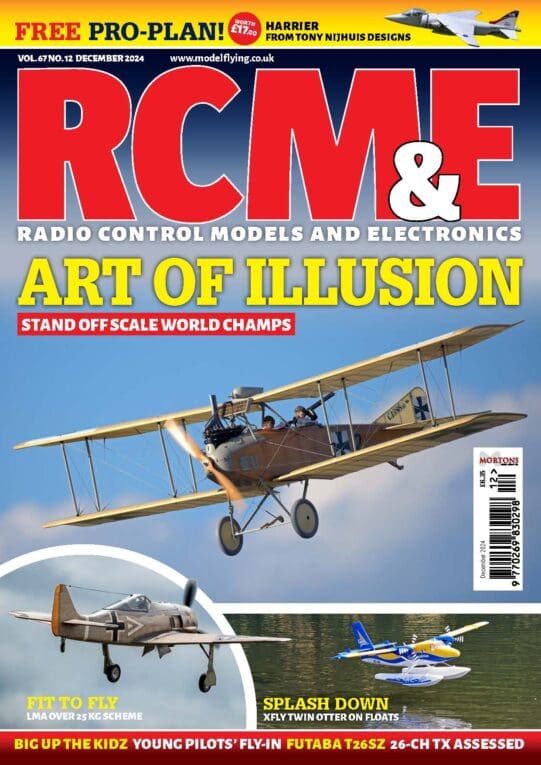YOU WILL NEED:
1. A well ventilated room
2. A variety of cyano glues
Enjoy more RCM&E Magazine reading every month.
Click here to subscribe & save.
3. Materials (wood, plastic etc.) on which to experiment
1. Whilst a plethora of glues are now available, the following tend to be more popular: thin, medium, thick, foam safe, odourless and, finally, EPO foam compatible.

2. The basic cyanos (thin, medium and thick) may be all you need to fulfil a variety of building tasks. The thicker glues work better to join uneven surfaces and fill small gaps, yet almost all will permeate the wood grain and deliver an incredibly strong joint.

3. A kicker spray, used in conjunction with cyano glues, is indispensable. It speeds up the reaction giving an almost instant bond. It’s also particularly useful in freezing unintentional runs where too much glue has been used.

4. Thin cyano is great for gluing dry assemblies, particularly those formed by laser cut interlocking parts. Allow it to run through the joint, perhaps adding kicker spray. The instant cure / dry nature of the joint means that model building time can be accelerated.

5. Standard cyano will melt some foam such as Depron and polystyrene, so foam safe cyanos should be used here. Never assume any cyano is foam safe; always test it on some scrap material before use.

6. Standard cyanos don’t work well with EPO foam unless a kicker is used. Here you’ll need to spray the kicker on one surface and add cyano to the other before joining the parts. As a result, EPO specific cyanos are now available.

7. Cyano should be used with care when bonding plastic parts as a ‘bloom’ will nearly always appear – a horrible eyesore on the exterior of any model. In this respect, never use cyano for canopies or to glue parts to a Solarfilm surface.

8. Joints secured with cyano can be strengthened using Microballoons or microspheres filler. These tiny powder-like spheres can be added to a joint over which cyano is poured. Microballoons are an excellent way of filling small gaps, too.

9. Apart from separating fingers, debonders can also remove unwanted cyano spills from plastic or film covered surfaces. Apply a little to the surface, allow it to permeate the area and then gently rub away with a cloth.
DID YOU KNOW?
First going on sale in 1958, cyanoacrylate glues were stumbled upon by Kodak company scientists in 1942 when searching for material from which to make clear plastic gun sights… Cyanos react to moisture in the air, so make sure those bottle caps are tight to prevent deterioration… It’s important to use cyanos in well ventilated rooms, particularly if a kicker is in use. Cyano fumes can be a very nasty irritant. Always use these glues with care; body parts will bond before you can say, “where did I leave the debonder?”





